An Award From King George VI to the Soviet People.
Sword of Stalingrad – A ceremonial sword decorated with precious metals and stones. Forged by special decree of King George VI of Great Britain as a sign of the admiration of the British people for the courage shown by the Soviet defenders of Stalingrad during the battle for the city. Presented on November 29, 1943 by British Prime Minister Winston Churchill to Marshal of the Soviet Union Joseph Stalin in the presence of US President Franklin Roosevelt and the guard of honor at a ceremony timed to coincide with the opening of the Tehran Conference… Exhibited at the Panoramic Museum of the Battle of Stalingrad in Volgograd.
Specifications
The blade of the sword – edged, pointed, convex, without dale , the model of “Crusader”, hand-forged from high-grade Sheffield steel. Blade length – 36 inches (about 91.4 cm). On the blade, the inscriptions in Russian and English have been etched with acid:
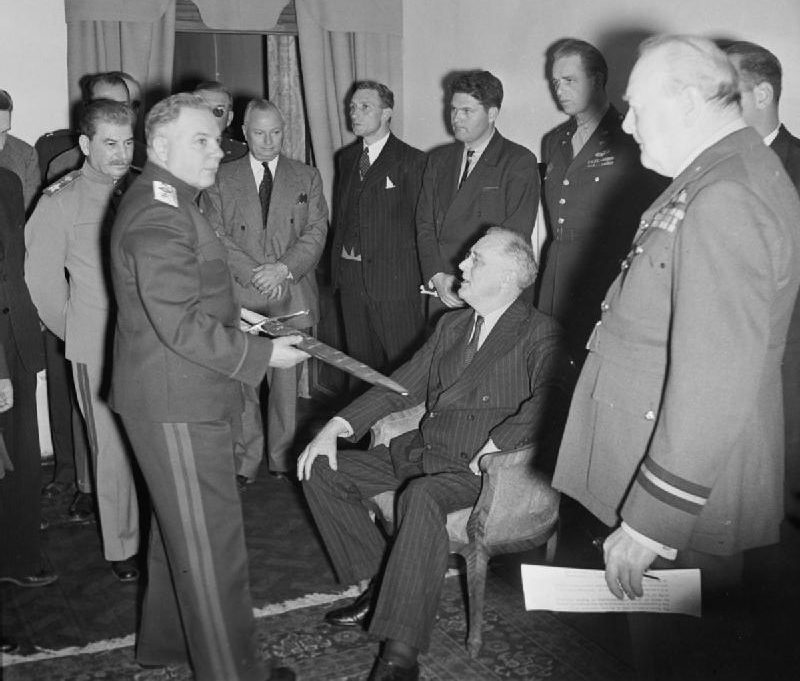
TO THE CITIZENS OF STALINGRAD • STRONG AS STEEL • FROM KING GEORGE VI • IN THE SIGN OF THE DEEP ADMISSION OF THE BRITISH PEOPLE TO THE STEEL-HEARTED CITIZENS OF STALINGRAD • THE GIFT OF KING GEORGE VI • IN TOKEN OF THE BRITISH HOMAGE
The handle is braided with 18K gold wire. At the end of the head of rock crystal is a golden Tudor rose. The guard is made of pure silver. The gilded arches of the guard, bent towards the blade, are made in the form of stylized leopard heads. The scope of the arms is about 25.4 cm. The total length of the sword is about 122 cm. The scabbard is crimson, made of dyed broadtail (according to some sources – from morocco leather) – decorated with a silvered royal coat of arms, crown and monogram, five silver overlays and three five-pointed ruby stars set in gold.
The sword is considered one of the masterpieces of the blacksmith’s weapons craft of the modern era.
Manufacturing
Sketch sword made by Professor Oxford ( Don ) Fine Arts RM Gleadow J. and approved person King George VI. The progress of work on the production of the sword watched a panel of nine experts from the Guild of British goldsmith masters. The Russian edition of the dedication was made by a specialist in Slavic iconography, President of Cambridge Pembroke College Sir Ellis Howell Minns.
The Sword is made at the company Wilkinson Sword for blacksmiths, gunsmiths Tom Beasley) and Sid Rose, calligrapher Mervyn S. Oliver and silversmith corporal in the Royal Air Force of Great Britain J. Leslie. Durbin). The blade steel was supplied by Sanderson Brothers and Newbould, Sheffield.
The project, from sketch to finished sword, took about three months to complete.
On February 23, 1943, the newspaper Pravda published a telegram from King George VI of Great Britain to the Chairman of the Presidium of the Supreme Soviet of the USSR M. I. Kalinin , in which he mentioned his order to make a sword, and a reply telegram from Kalinin:
Telegram from King George VI of Great Britain to Mikhail Kalinin, Chairman of the Presidium of the Supreme Soviet of the Union of Soviet Socialist Republics
Today, my peoples and I join the peoples of the Soviet Union in sincerely paying tribute to the heroic qualities and magnificent leadership, thanks to which the Red Army, in its fight against our common enemies, has written new pages in history with its glorious victories. The stubborn resistance of Stalingrad turned events and served as a harbinger of crushing blows that sowed confusion among the enemies of civilization and freedom. In order to celebrate the deep admiration felt by me and the peoples of the British Empire, I gave the order for the manufacture of an honorary sword, which I will have the pleasure to present to the city of Stalingrad. I hope that in the happy days to come, this gift will remind of the unyielding courage in which the warrior city was tempered in the struggle against the strong and stubborn attacks of its enemies,and that he would be a symbol of admiration not only for the peoples of the British Empire, but for the entire civilized world.
-King George VI
London, 21 February 1943
Telegram from the Chairman of the Presidium of the Supreme Soviet of the USSR M.I.Kalinin to King George VI of Great Britain
I ask you, Your Majesty, to accept my sincere gratitude for your message containing such a high assessment of the achievements of the Red Army in its struggle against our common enemy. The many expressions of friendly feelings the British people have towards the Red Army are evidence of the strength of the military alliance between our countries. I informed the authorities of the mountains. Stalingrad about your decision to present to this city an honorary sword manufactured by your order, which will undoubtedly be accepted by the participants in the defense of Stalingrad, as well as by the peoples of the entire Soviet Union, with gratitude, as a symbol of brotherhood in arms between the peoples of Great Britain and the Soviet Union.
Mikhail Kalinin.
Moscow Kremlin. February 22, 1943
Handing over
The official presentation of the sword took place at the Soviet embassy in Tehran during a meeting of representatives of the Big Three to discuss plans for the Normandy operation (“Overlord”).
On November 29, 1943, after a three-hour delay, the heads of government and their accompanying delegations gathered in the conference hall of the USSR Embassy in Iran. Soviet and British honor guards lined up along the walls of the hall opposite each other. The British held carbines with bayonets at their feet, the Soviet crew lined up with PPSh machine guns (without magazines) on their chests. Joseph Stalin in the uniform of the Marshal of the Soviet Union and Franklin Roosevelt (in civilian clothes) were in the hall.
When Winston Churchill appeared in the blue uniform of the Commodore of the Royal Air Force of Great Britain, the Soviet military band performed several bars of the British and Soviet national anthems – ” God Save the King ” and ” Internationale”. Stalin greeted the hymns with a military salute. Looking at him, the Prime Minister of Great Britain raised his hand to his head in greeting. Voroshilov (on the right hand) and Molotov (on the left), who were standing next to Stalin, listened to the hymns without performing a military salute. Then Stalin and Churchill, who were standing next to the conference table on the “Soviet” side of the ceremony, shook hands, after which Churchill put on his glasses and began to unfold the sheets of speech. At the same time, an officer of the British honor guard approached the table from the British side, holding a sword in a sheath, point up, with both hands on the handle. From the Soviet side, an officer of the Soviet guard came up and stood in front of the British.
Churchill addressed to Stalin, saying: “I am instructed to present to you the sword of honor as a sign of deep admiration for the British people”. While his words were being translated by the translator, Churchill took off his glasses; at this time the British officer of the guard of honor walked towards Churchill, lowering the sword horizontally, and handed it to the Prime Minister. Churchill hesitated slightly, as he still held the papers in his left hand, but putting the papers on a nearby table, he accepted the sword and immediately, smiling, handed it to Stalin.
Stalin kissed the scabbard and thanked the British Prime Minister in an undertone. Churchill gave a friendly wave of his hand, possibly saying “Please!”. At this time, Stalin, turning to Voroshilov, who was standing to his right, and wanting either to show the sword, or to hand it over, awkwardly tilted the gift with the handle down, and the heavy sword, slipping out of the scabbard, hit the head of the handle on the carpet. Voroshilov tried to grab the falling sword, but did not manage to do so. After the incident, the sword was returned to its scabbard and handed over to Voroshilov, then Stalin and Churchill exchanged handshakes a second time. Churchill also shook hands with Voroshilov.
Voroshilov invited an officer of the Soviet guard of honor and presented him with a gift from King George. The officer took the sword on guard with the tip down, slightly touching the table with the scabbard, turned around and, having made a few steps with a marching step, took his place in the line of the guard of honor. After seeing him off, Stalin and Churchill, accompanied by other members of the allied delegations, proceeded to the opposite end of the hall from the entrance, where Roosevelt and members of the American delegation were present.
Roosevelt sitting in a wheelchair, looked taken out of his sword (the sheath at the same time kept standing near Churchill), and read the inscription that said: “Verily, they were of the steel heart”. The sword at this time was with its tip to the right of Roosevelt, while Churchill, standing with a scabbard, stood to the left of Roosevelt. Roosevelt, continuing to say something, unrolled his sword in the air and put it in the scabbard provided by Churchill. Voroshilov, who approached, helped to pull the scabbard over the sword and, having taken it from Roosevelt’s hands, handed it over to the officer of the Soviet guard of honor.
Location
Before donating the Soviet Union sword was exhibited with religious honors in several temples of the UK, including Westminster Abbey (ceremony, which has become a key stage in the military trilogy Evelyn Waugh’s “Sword of Honor” ).
During the Cold War, the sword returned to Britain three times for display at various exhibitions. Now the sword of Stalingrad is an exhibit of the Museum of the Battle of Stalingrad in Volgograd
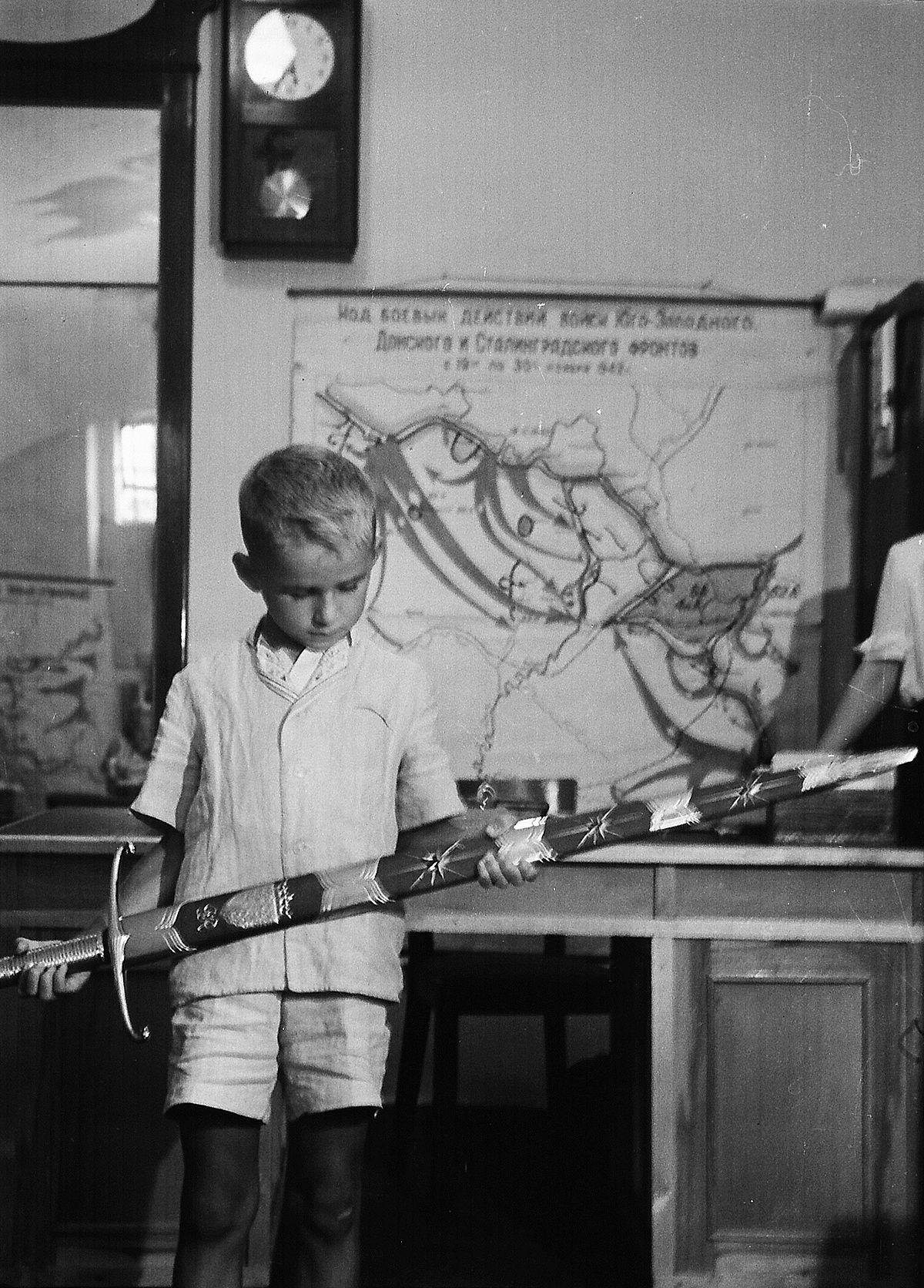
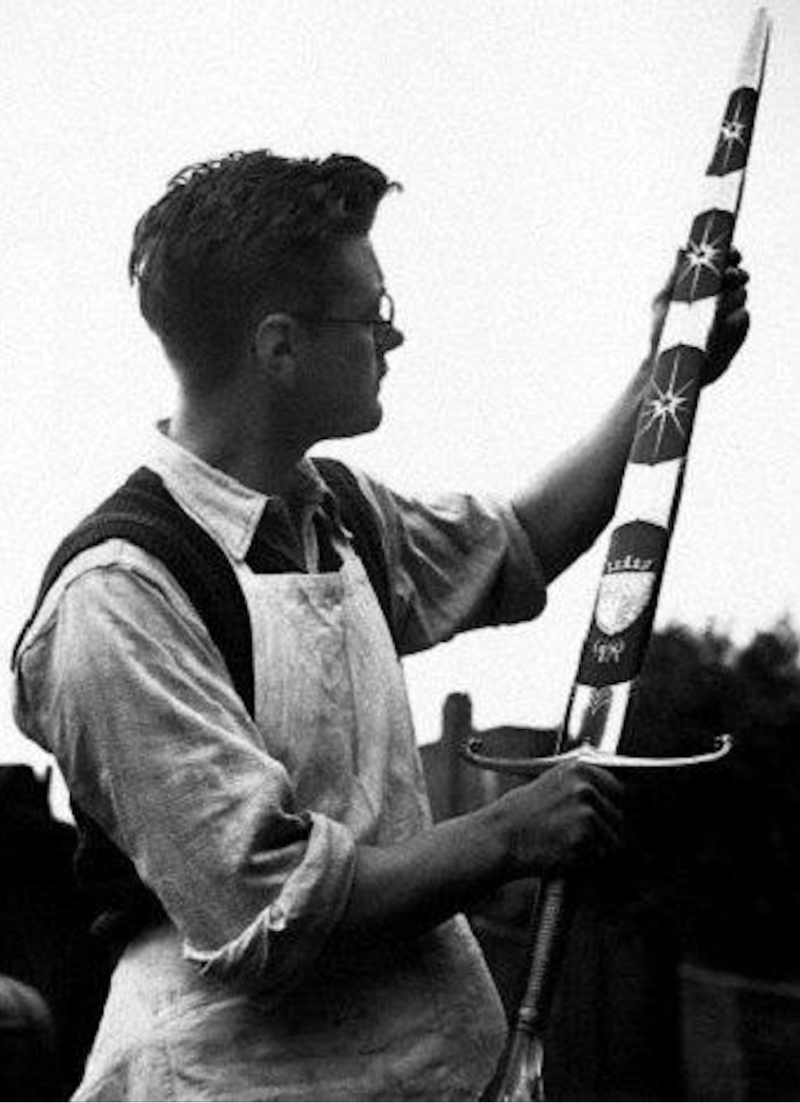
Making the Sword of Stalingrad


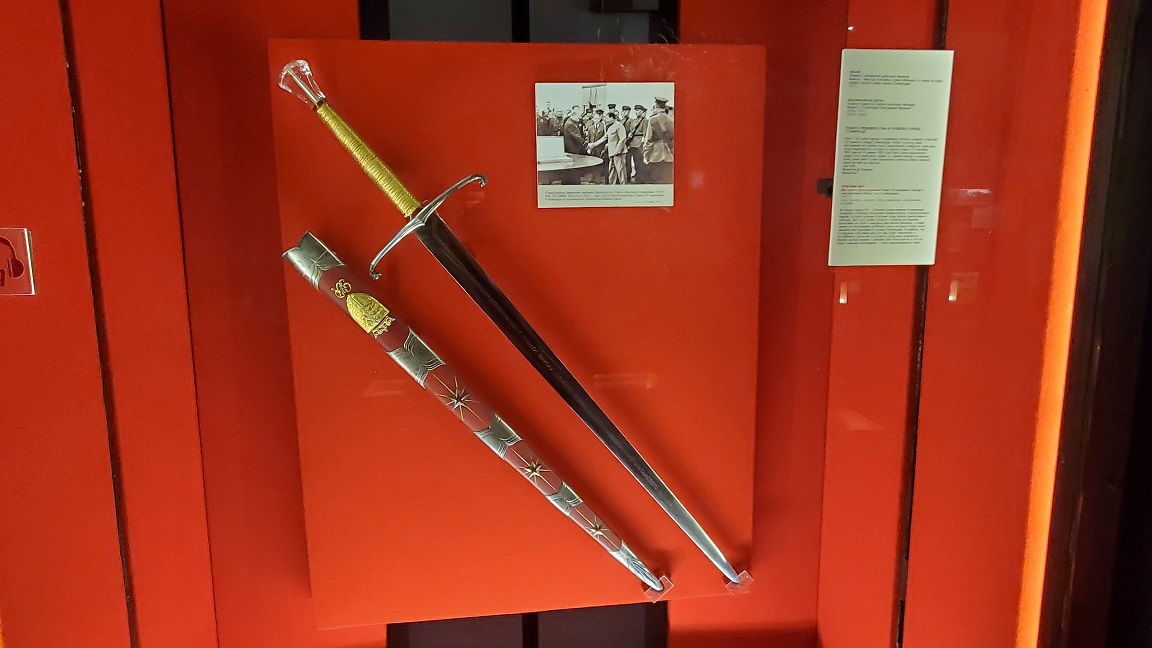


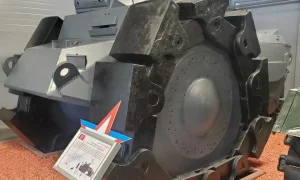

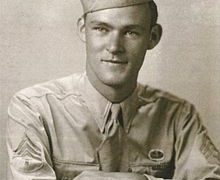





Pingback: My Trip to Russia 2022 Part II - Bumble Buddhist
Pingback: - Bumble Buddhist-Exploring Reality, Seeking Truth